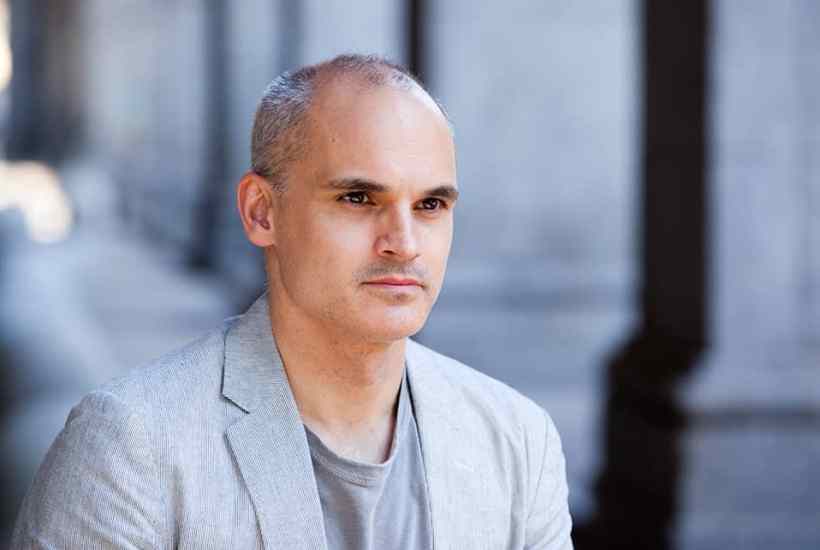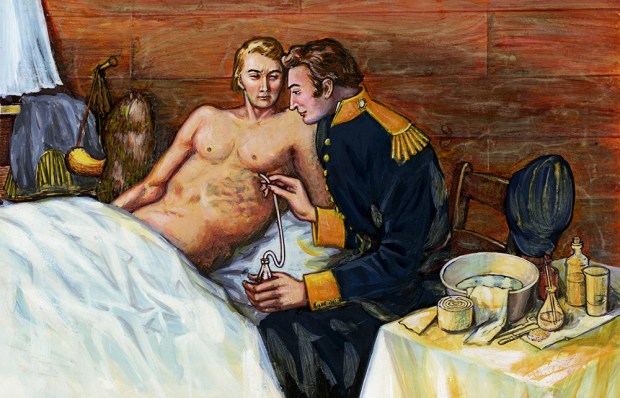‘I don’t trust fiction,’ the famous author told me, both of us several glasses to the good. ‘It contains too much truth.’ I nodded and she laughed and we drank more wine, but that sentence stayed with me in all its aphoristic glory. When she died, this was the first thing I remembered: our conspiratorial conversation in the deepest dark of 1990s Soho.
This is not true. It has the feel of lived experience, yet it is entirely invented. The context, its placement and the fact that it is printed in a magazine gives it credence. As readers, we do not expect to be lied to. With a work of fiction, the opposite is true. Lies is all we can hope for. Hernan Diaz’s excellent second novel Trust asks which lies are more compelling: the ones we tell ourselves or the ones the world throws our way?
Trust opens with a novella called ‘Bonds’ (a title that also has a financial double-entendre), allegedly written by one Harold Vanner: a breathtaking account of Wall Street trader Benjamin Rask’s rise and rise, and that of his wife Helen. It is 120 pages of glowing, vital prose; an exquisite evocation of the roar of the 1920s and the howl of the Great Depression; an emotional maelstrom enveloping two characters who have seemingly spent their lives shying from emotion. Later in Trust, a recap of the reviews of ‘Bonds’ finds that some critics found it derivative; but while there is a suggestion of Henry James and Edith Wharton there, Diaz’s sentences and pacing feel singular.
Three pieces follow ‘Bonds’, all also attributed to different writers, that purport to tell the truth of the ‘real-life’ couple who inspired Vanner’s fiction: Andrew and Mildred Bevel. Initially it is disappointing to leave the beautifully manicured style of ‘Bonds’, but Diaz imbues each new section with its own virtues, as well as casting doubts on the accounts that have preceded them. Scenes and sentences recur, events are shown from different perspectives, but Diaz rarely overplays his hand: the reveals come without fanfare, staying true to each individual narrative. To say more would be to dampen those moments of revelation and diminish a skilfully crafted box of tricks.
‘But remember: money is a fiction’, an Italian immigrant character, a welcome counterpoint to the storied families that dominate the narrative, says to the writer of the third section, and this link between the invented nature of modern life and our invention of money is well explored. Diaz is brilliant on the pernicious, intoxicating thrill of currency, of trading, of futures and derivatives and also on the misery they inevitably cause.
There are minor flaws in the careful construction, however. Characters occasionally act seemingly just to service the plot and certain narrative lines (especially concerning the enigmatic Vanner) are left frustratingly unexplored. These are lies the reader will find hardest to swallow; but otherwise it’s difficult not to be taken in by this enigmatic, memorable novel.
Got something to add? Join the discussion and comment below.
Get 10 issues for just $10
Subscribe to The Spectator Australia today for the next 10 magazine issues, plus full online access, for just $10.
You might disagree with half of it, but you’ll enjoy reading all of it. Try your first month for free, then just $2 a week for the remainder of your first year.














Comments
Don't miss out
Join the conversation with other Spectator Australia readers. Subscribe to leave a comment.
SUBSCRIBEAlready a subscriber? Log in